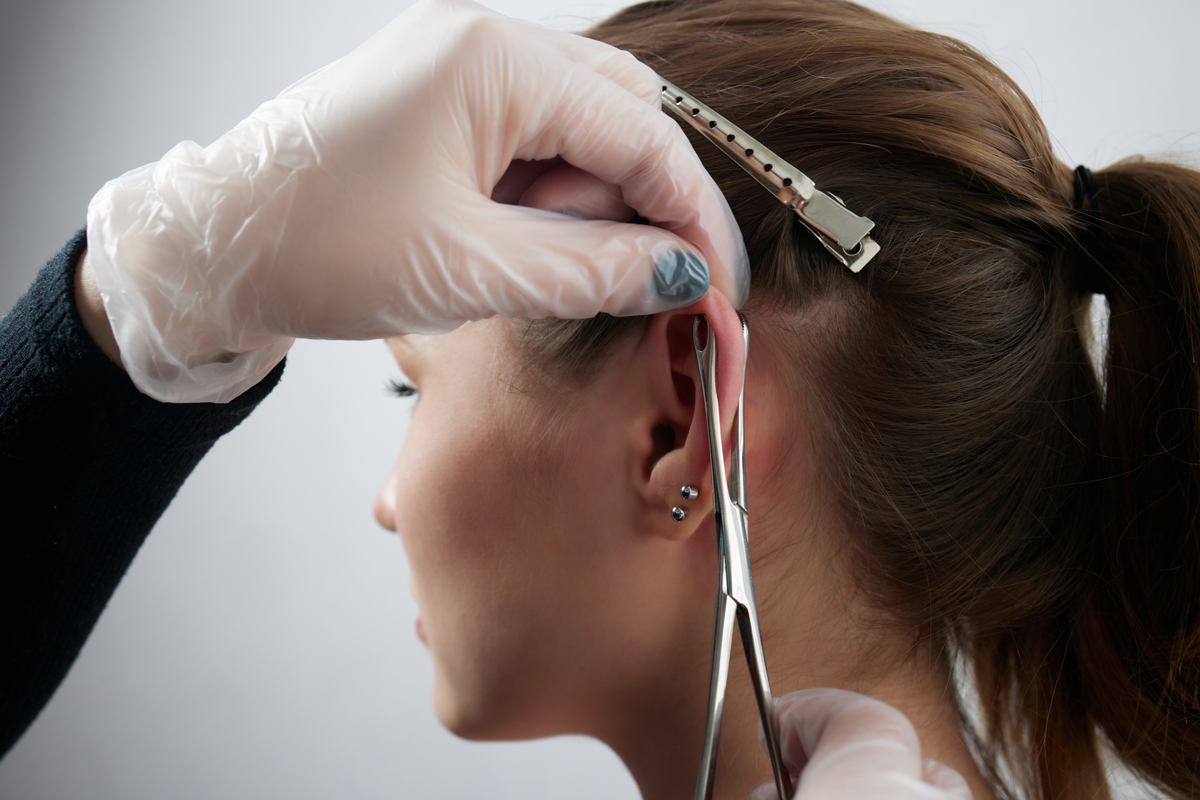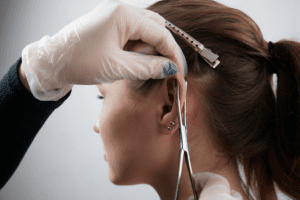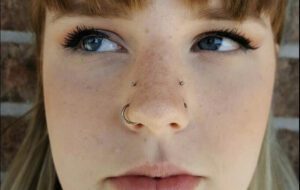
Helix Piercing: A Definitive Guide to Stylish Cartilage Earrings and Aftercare

Helix Piercing: A Definitive Guide to Stylish Cartilage Earrings and Aftercare
Helix piercing is a popular form of ear piercing that involves the cartilage of the upper ear. If you’ve been thinking about getting a helix piercing, you might be wondering what it is exactly and what benefits it offers.
Helix piercing can be a unique and stylish way to enhance your overall appearance. It can be a fun way to express yourself while also adding a touch of elegance and edginess to your look. With the variety of types and jewelry available, there’s no limit to what you can do with a helix piercing.
In this post, we’ll be exploring some of the best helix piercing types and jewelry to suit every style and occasion.
What is a Helix Piercing?
In addition to its style factor, a helix piercing is also relatively easy to care for and can heal relatively quickly, especially if you follow the proper aftercare instructions. However, it is important to note that everyone’s healing process can differ, so it is crucial to pay close attention to your body’s signals and listen to your piercer’s advice.
Types of Helix Piercings
1. Single Helix Piercing
This is the most common type of helix piercing, and it involves a single hole through the upper cartilage of the ear. It’s a simple and classic option that can be dressed up or down with the right jewelry.
2. Double Helix Piercing
A double helix piercing involves two holes placed in the upper cartilage of the ear. It creates a more dynamic look than a single helix piercing, and can be paired with a variety of different earrings.
3. Triple Helix Piercing
For a more intricate and statement-making look, consider a triple helix piercing. It involves three holes placed in a row on the upper cartilage of the ear, and can be a great way to show off multiple earrings.
4. Forward Helix Piercing
Unlike the other helix piercings, a forward helix piercing is placed on the front of the ear. It involves a single hole through the cartilage near the top of the ear, and can be a great option for those who want a more subtle piercing.
5. Industrial Piercing
This is a bold and unique piercing that involves two holes connected by a barbell. The holes are usually placed in the upper cartilage of the ear, with one near the helix and one near the forward helix.
Top Tips - Choosing the Right Jewelry for Your Helix Piercing
Once you’ve got your helix piercing, it’s time to choose the perfect jewelry to complement your style and personality. There are several factors to consider when selecting helix piercing jewelry, including material, size, and style. Here are some tips to help you make the right choice:
3. Style: There are various styles of helix piercing jewelry to choose from, including studs, hoops, barbells, and captive bead rings. Your choice will depend on the occasion and your personal taste.
For everyday wear, simple studs or hoops in a classic metal color like silver or gold are timeless choices. For a more edgy or trendy look, you can opt for a variety of colors or embellishments like diamonds, pearls, or charms.
Popular Helix Piercing Trends and Styles
How to Care for Your Helix Piercing
After getting your helix piercing, it’s important to properly care for it to ensure it heals well and avoids any complications. Follow these steps to take care of your new piercing:
- Clean your piercing daily with saline solution. Use a cotton swab to gently clean around the piercing, and avoid using any harsh soaps or cleaning solutions.
- Avoid touching or twisting your jewelry. Only handle your jewelry when cleaning it, and don't play with it or move it around unnecessarily.
- Don't change your jewelry too soon. Wait at least 4-6 months before changing your initial jewelry to allow your piercing to fully heal.
- Avoid sleeping on your pierced ear. Try to sleep on the opposite side to avoid putting pressure on the piercing.
- Keep your hair away from your piercing. Tie up long hair or wear a hat or headband to avoid hair getting caught in the piercing.
- Be cautious during physical activities. Avoid any activities that may cause trauma or pressure to the piercing, such as contact sports or wearing headphones.
- Listen to your body. If you experience any unusual pain, swelling, or discharge, contact your piercer or a healthcare professional for advice.
Five helix piercing myths debunked
If you’re considering getting a helix piercing, you may have heard some rumors or myths about it. To make an informed decision, let’s debunk five common myths about helix piercings.
1. Helix piercings are extremely painful
Many people believe that helix piercings are one of the most painful piercings you can get. While everyone’s pain tolerance is different, most people find the pain to be manageable and no more painful than getting a shot. With a good piercer, the process is quick and easy.
2. Helix piercings take forever to heal.
Healing times vary, but helix piercings typically take anywhere from three to nine months to fully heal. The aftercare process is essential to ensure proper healing. With proper cleaning and care, the healing process can be faster than you may think.
3. You can’t sleep on your side after getting a helix piercing.
While it’s recommended that you avoid sleeping on your new piercing, many people are able to sleep on their side after a few days or weeks. Just be sure to use a clean pillowcase and avoid putting pressure on the piercing.
4. Helix piercings can cause infections easily.
Like with any piercing, there is a risk of infection if proper care is not taken. However, as long as you follow the aftercare instructions given to you by your piercer, the risk of infection is very low. If you do notice any signs of infection, such as redness, swelling, or discharge, be sure to contact your piercer or a medical professional immediately.
5. You can’t change your jewelry for months after getting a helix piercing.
While you should avoid changing your jewelry during the healing process, once your piercing has fully healed, you can change your jewelry as often as you like. Just be sure to use clean and sterilized jewelry to avoid any infections.
By debunking these myths, you can feel more confident in your decision to get a helix piercing. Just be sure to do your research and find a reputable piercer to ensure a safe and successful piercing experience.




